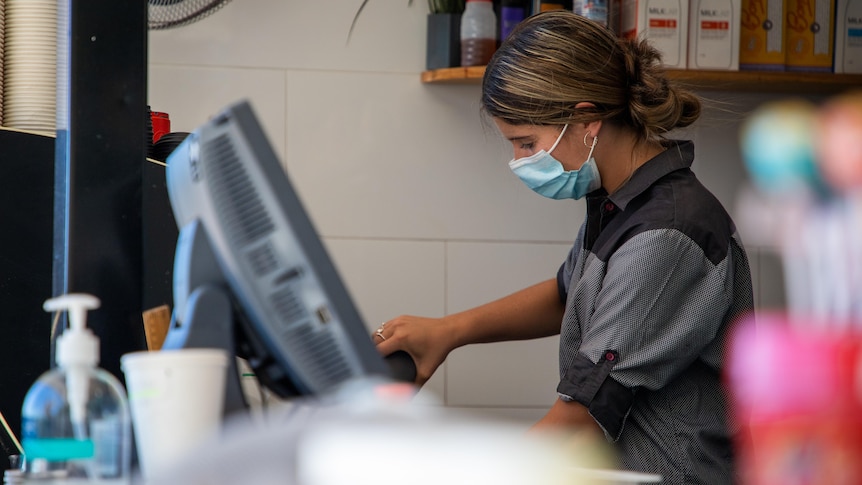Women are participating in the workforce at a higher rate than ever before in Western Australia but they still face the biggest gender pay gap in the country, a report has found.
Key points:
- The report says female participation in the WA workforce is at 64.5 per cent
- But the gender pay gap is still 7.5 per cent higher than the national figure
- Reports of violent and sexual assaults by family members have increased
The WA government’s 2022 Women’s Report Card — which measures the health, safety, economic independence and leadership opportunities of the state’s women — says female participation in the workforce is the highest it has ever been.
The report shows female participation in the workforce has reached 64.5 per cent, a rise of more than 3 per cent since 2007.
Among these working women, just over 50 per cent are employed full-time, compared with 82.6 per cent of men.
The report also reveals changing attitudes on gender roles.
Almost 50 per cent of men in 2005 agreed with the statement “mothers who do not really need the money shouldn’t work”.
That number fell to 27 per cent in 2019.
More unpaid work and caring, less super
But unpaid work and caring responsibilities continue to be primarily done by women.
Almost 26 per cent of women in WA provided unpaid childcare work in 2020, compared to 15.4 per cent of men.
Almost 50 per cent of women with children are more likely to work part-time compared to just 7.8 per cent of men.
The report found the gender pay gap for full-time workers fell from almost 27 per cent in 2007 to just over 21 per cent last year.
But that is still 7.5 per cent higher than the national level.
The report also found women have an overall average of 50 per cent less superannuation than men, while 22 per cent of women aged between 55 and 65 have no superannuation at all, compared to 9 per cent of their male counterparts.
Gap widens in motherhood
The report card found women make up nearly 60 per cent of university graduates and have exceeded their male counterparts in obtaining degrees since 1985.
But Women’s Report Card researcher Silvia Salazar said that motherhood is when the gender gap really widens.
“We expect that if women are more educated, then naturally, we will earn more money, and we have more leadership positions, but this is not what we are actually seeing,” she said.
Dr Salazar said that it was partly due to the knock-on effects of maternity leave.
“At the beginning, there is still a gap in graduates, but there is not so much in terms of the pay gap,” she said.
“But once women have children, this is where the gap really widens.
“It’s not only about getting women into these high-paying jobs, but also making sure that they have the possibilities to evolve in leadership roles, and then get higher wages.”
Resources industry part of problem and solution
WA Women’s Interests Minister Simone McGurk says while the report did highlight some improvements to the wellbeing of West Australian women, there is still a long way to go.
“We’ve had the largest gender pay gap in the country for a number of years and that really does need to change,” she said.
“That means attracting more women into high paid industries, like the resources sector, for instance, and also starting to do what we can to lift women’s wages in the service sector in retail and other areas where they dominate.”
While Ms McGurk pointed to WA’s strong resources sector as a possible solution to bridge the gap, she also used it to explain the cause of the issue.
“I think the most obvious [reason] is the concentration of such high paid industries in the resources sector, mining, and oil and gas.”
The typically male-dominated fly-in, fly-out industry has been in the spotlight lately amid reports of sexual harassment and assaults on and off site.
Ms McGurk said it was imperative the industry was both a “safe” and “attractive” one for women to work in.
Looking at the positive findings in the report card, Ms McGurk said there was hope for change.
“I think the other thing that we learned from the report card is we see where there’s an effort, where there’s determined action and clear commitment to change, we do start to see results,” she said.
Rise in reported family assaults
Meanwhile, another measure that excludes Victoria and Queensland due to a lack of data, shows how in 2021 about 1.25 per cent of WA women reported being violently assaulted by a family member.
The rate has risen in the past three years.
Reported sexual assaults by a family member also rose over the same period.
The report said these numbers raised concerns about how COVID-19 restrictions may have impacted women’s safety.
Women made up 85 per cent of adult victims who reported breaches of violence restraining orders in 2020 and 2021.
In the same period, the number of reported sexual assaults rose to 953, 20 per cent higher than the prior two years.
Only 16.1 per cent of sexual assault investigations in WA resulted in charges being laid.
.
